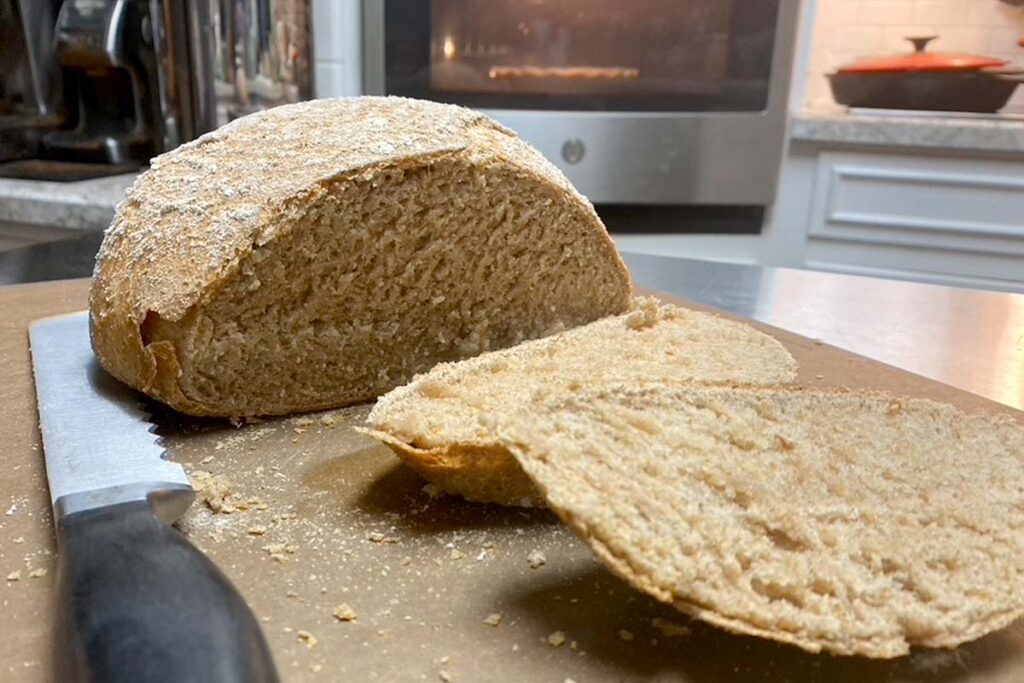When I first started baking with whole grains I would make the only from-scratch recipe I knew (my 5-Ingredient basic bread my mother-in-law shared with me me) and swap about half the flour for whole grain wheat flour, making it “more healthy” than using all-purpose four.
Over time I got more bold and started making 100% whole grain breads, although many of those early creations were hard or dense.
Gah!
My early failures were mostly due to my attitude towards whole grains. I wanted to take recipes developed for all-purpose flour and create whole grain versions with zero modifications, always turning delicious. What I didn’t factor in is the individual personalities of the whole grains, how whole grain is fundamentally different than cooking with all-purpose flour, and that whole grain brings a completely different taste and texture to the table.
Like most of you, I grew up only on all-purpose flour and store-bought white bread and that the techniques of whole grain bread were probably lost with my Great Grandma Lesta.
Over time I’ve learned some tips and tricks that are throughout this website, but I also keep this list updated so you have them in one place.
Here we go:
1. Chose the right whole grain
Are you making a hearty artisan loaf? Delicate cookies? Adding grain to a soup? Start with the end result and then work backwards to pick the right whole grain and then the right blend.
Lean into each grains personality and set it up for success.
To help pick the right grain, check out my A-Z Whole Grain Glossary.








